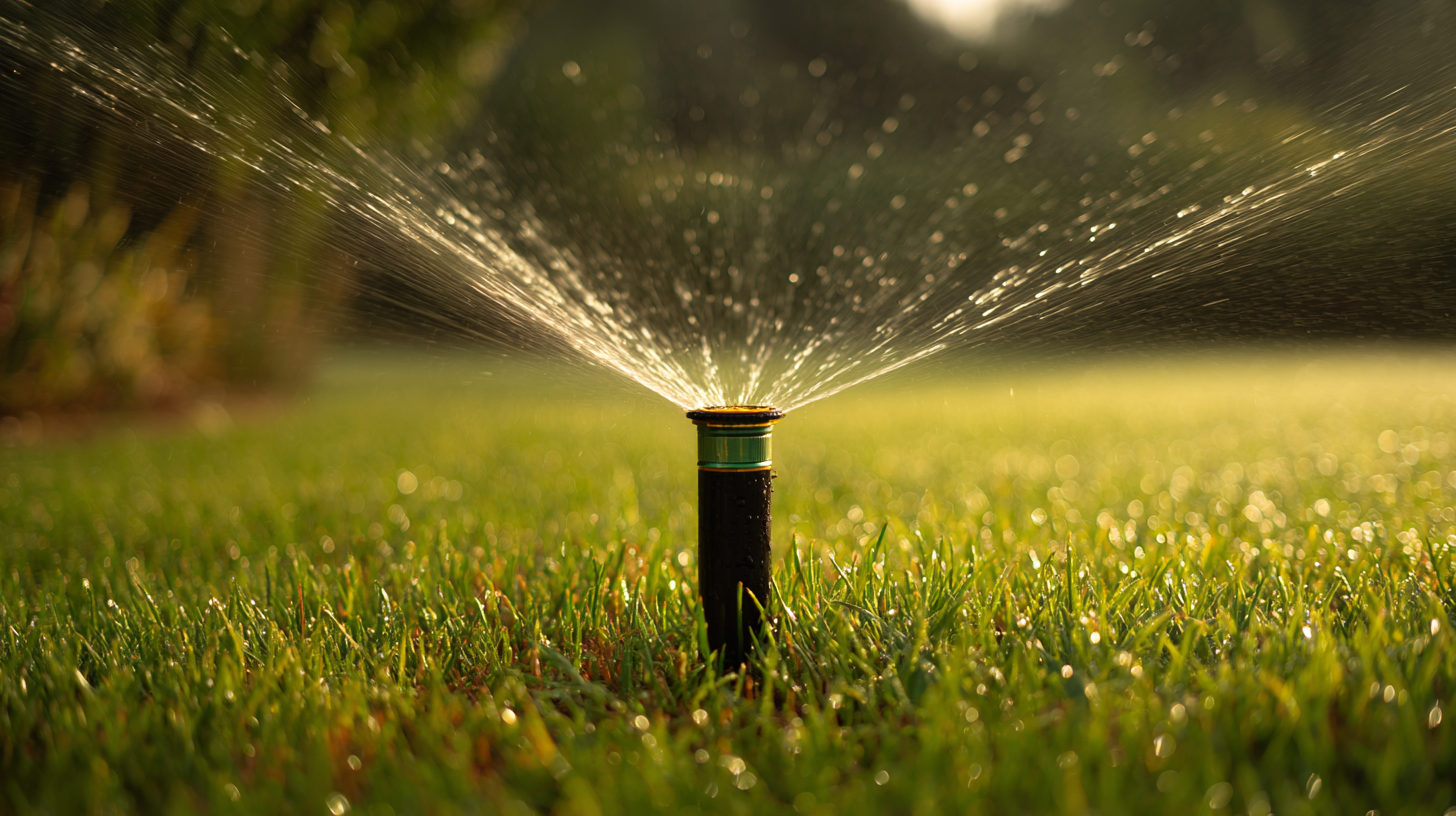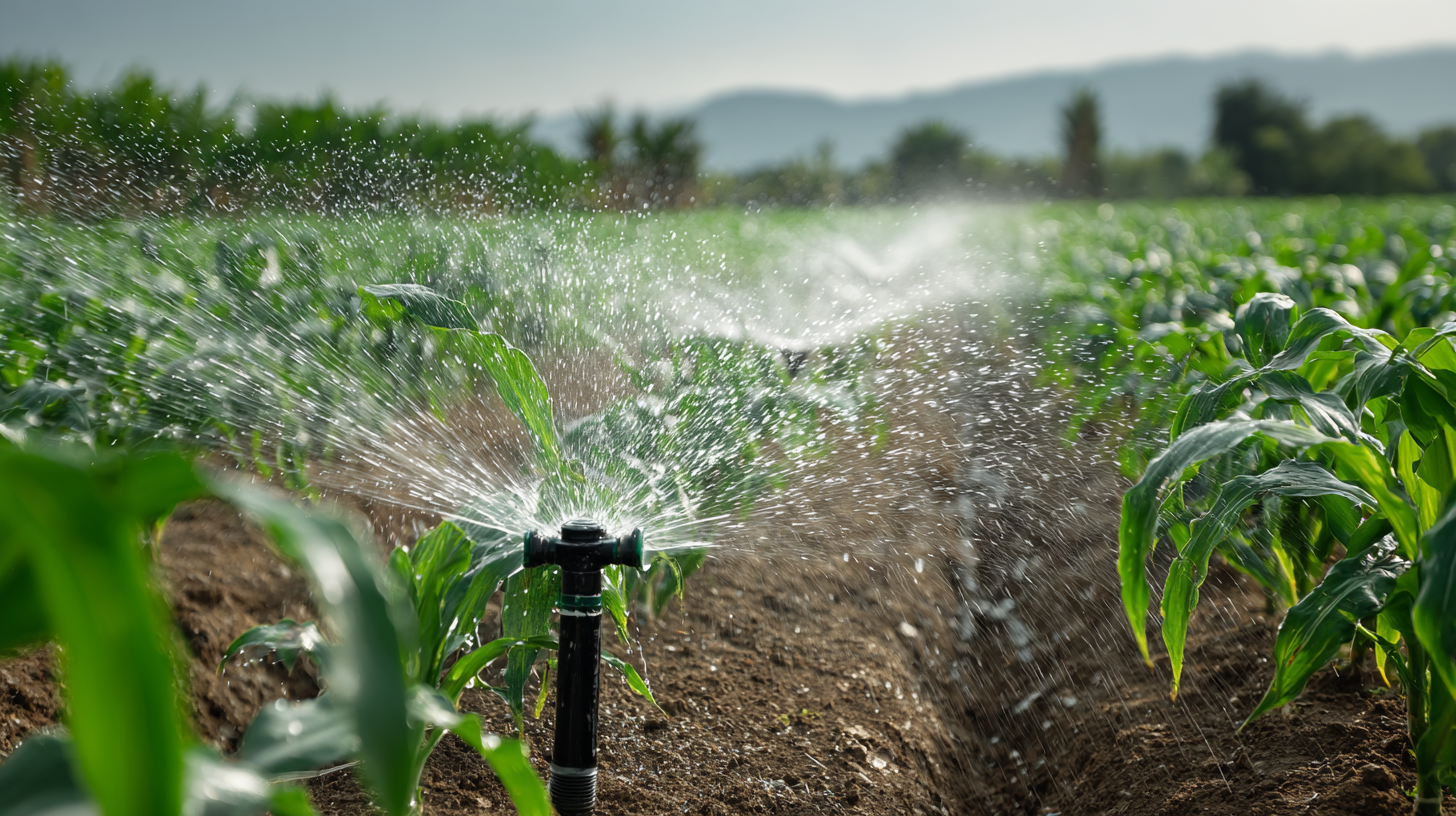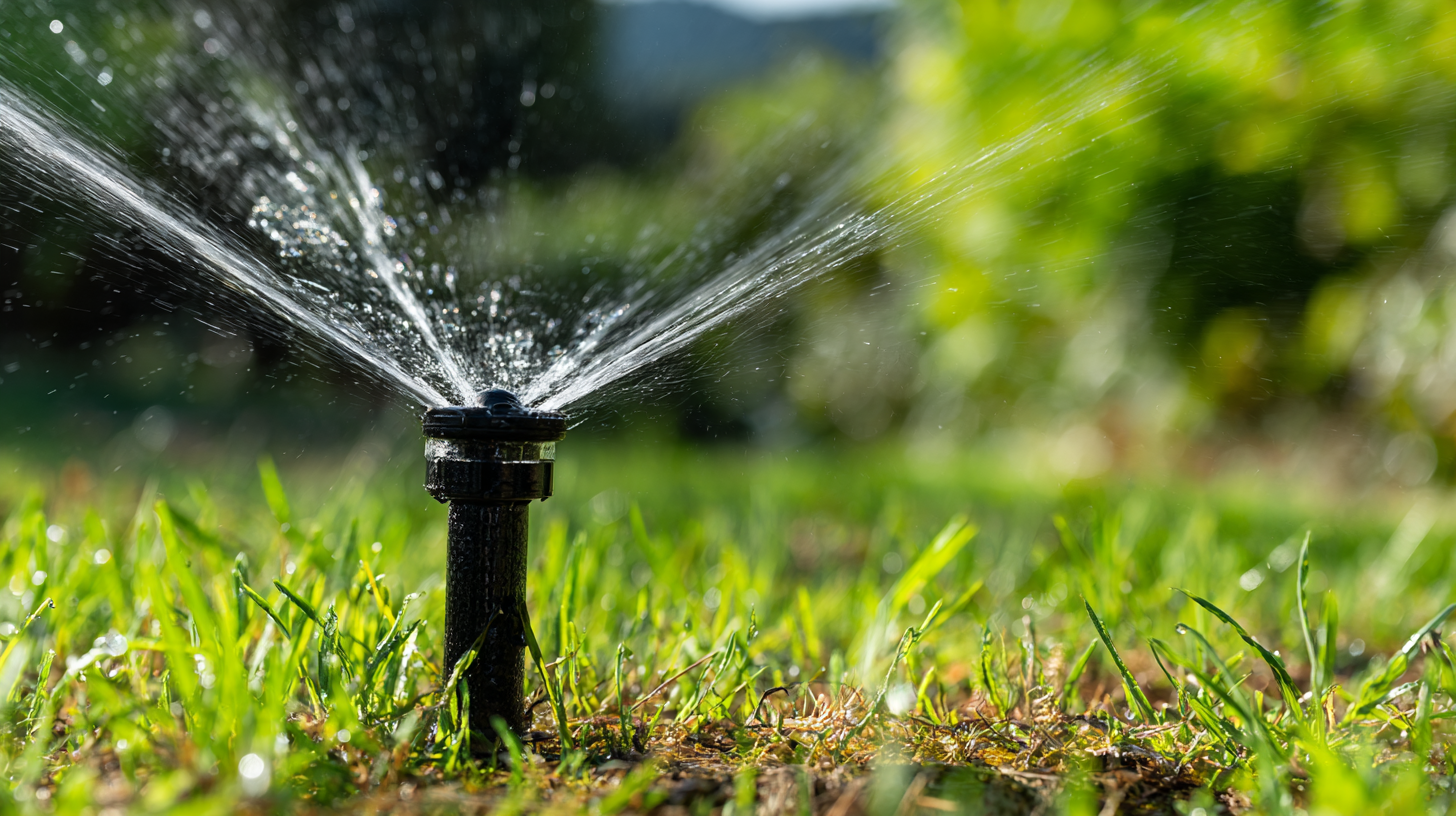In an era where efficient water management is vital for sustainable gardening and agricultural practices, choosing the right irrigation solutions can significantly impact water conservation efforts. According to the United Nations, nearly 2 billion people worldwide are currently living in water-stressed areas, emphasizing the need for innovative watering technologies. Among these, the Rotating Sprinkler stands out as a game-changer, offering adjustable coverage and uniform water distribution, which can reduce water wastage by up to 30% compared to traditional systems.

Additionally, a report by the Irrigation Association reveals that leveraging advanced irrigation methods, such as rotating sprinklers, can lead to significant increases in crop yields while minimizing the ecological footprint. In this blog, we will explore the seven best rotating sprinklers available globally, highlighting their technical specifications and providing tips on how to effectively integrate these efficient watering solutions into your gardening routine.
 Efficient watering plays a crucial role in sustainable gardening practices, allowing gardeners to conserve water while maintaining healthy plants. Utilizing a rotating sprinkler system can significantly improve water distribution, ensuring that all areas of your garden receive the necessary moisture without waste. This method not only benefits the plants but also contributes to the larger goal of environmental stewardship.
Efficient watering plays a crucial role in sustainable gardening practices, allowing gardeners to conserve water while maintaining healthy plants. Utilizing a rotating sprinkler system can significantly improve water distribution, ensuring that all areas of your garden receive the necessary moisture without waste. This method not only benefits the plants but also contributes to the larger goal of environmental stewardship.
To enhance your watering efficiency, consider using timers with your sprinklers. This allows you to set specific watering schedules that adapt to your garden’s needs without over-saturating the soil. Additionally, mulch can be used to retain moisture in the soil, reducing the frequency of watering required. Proper calibration of your sprinkler system will also ensure that water is reaching where it’s needed most, preventing runoff and promoting a more sustainable approach to gardening.
Lastly, choosing the right time of day for watering can make a significant difference. Early mornings or late afternoons are ideal, as they minimize evaporation and allow plants to absorb moisture effectively. Implementing these tips will not only lead to a thriving garden but also foster a responsible and sustainable gardening practice.
Rotating sprinklers are an efficient way to ensure your garden or lawn receives the required water without wasting resources. These sprinklers operate on a simple yet effective mechanism: they consist of a rotating arm attached to a central hub that disperses water in a circular pattern. As water pressure builds, it propels the arm forward, allowing for an even distribution across the designated area. This design minimizes dry spots and maximizes coverage, making it an ideal watering solution for large spaces.
When choosing a rotating sprinkler, consider the size and shape of your garden. For rectangular areas, look for models that offer adjustable spray patterns. Additionally, setting up your sprinkler during the cooler parts of the day can reduce evaporation, ensuring that more water reaches the roots. Regular maintenance, such as cleaning the nozzle and checking for clogs, will also extend the life of your sprinkler and enhance its efficiency.
Incorporating a timer can further streamline the watering process. By scheduling your sprinklers to run early in the morning or late in the evening, you take advantage of natural moisture in the air and prevent overwatering. This not only conserves water but also promotes healthier plant growth, giving you a lush garden while being environmentally conscious.
When selecting the best rotating sprinklers for efficient watering solutions, several key features should stand out to ensure high performance. First and foremost, consider the sprinkler's range and coverage area. High-quality rotating sprinklers are designed to efficiently distribute water across large sections of your lawn or garden, thus minimizing dry spots. Look for models that offer adjustable settings, allowing you to tailor the spray pattern and distance to fit your specific needs.
Another important feature is durability and weather resistance. Sprinklers made from high-grade materials tend to withstand various environmental conditions, from intense sunlight to heavy rains. Additionally, ease of maintenance is crucial; opt for sprinklers with removable components for easy cleaning and servicing, as this can enhance their longevity and performance. Lastly, consider any innovative designs that minimize water wastage, which not only conserves resources but also reduces your overall water bill, making these sprinklers an excellent investment for eco-conscious gardeners.

Rotating sprinklers have emerged as a game-changing solution for efficient water use in agriculture and landscaping, offering significant benefits in water conservation and cost savings. With increasing consumer demand for sustainably sourced products, farmers and homeowners alike are seeking ways to optimize their watering systems. Rotating sprinklers distribute water evenly across a designated area, minimizing waste and ensuring that plants receive the moisture they need without excessive runoff, thereby preserving vital water resources.
In light of recent water use restrictions in various cities and a broader push for sustainable farming practices, the importance of effective irrigation methods cannot be overstated. The adoption of rotating sprinklers not only leads to direct cost savings on water bills but also aligns with environmental goals focused on conserving our water supply. By employing such innovative irrigation technologies, we can contribute to the overarching mission of nutrient neutrality and eco-friendly agricultural practices, paving the way for a sustainable future in farming and landscaping alike.
Rotating sprinklers offer several advantages over traditional sprinkler systems, making them a preferred choice for efficient watering solutions. One major benefit is their ability to distribute water evenly across the lawn, which reduces water waste and promotes healthier plant growth. Unlike traditional systems that may create dry spots or over-saturate areas, rotating sprinklers utilize a rotating mechanism that ensures a uniform coverage, reaching even the most difficult corners of your garden.
When considering a rotating sprinkler, it's essential to choose the right type for your specific lawn size and shape. For larger areas, look for models with adjustable spray patterns and radius settings to maximize efficiency. Additionally, incorporating timers into your watering routine can help automate the process, ensuring that your garden receives the right amount of water at optimal times of the day.
For those looking to save on water bills, consider using rotating sprinklers during cooler parts of the day, such as early morning or late afternoon. This not only minimizes evaporation but also allows plants to absorb water more effectively before the heat of the day sets in. By making small adjustments, you can enhance the efficacy of your rotating sprinkler while conserving precious resources.
| Model | Water Coverage (sq. ft) | Rotation Speed (RPM) | Water Flow Rate (GPM) | Material | Special Features |
|---|---|---|---|---|---|
| Model A | 3,600 | 15-25 | 3-4 | Plastic | Adjustable spray angle |
| Model B | 4,800 | 20-30 | 3.5-5 | Metal | Built-in timer |
| Model C | 3,200 | 10-20 | 2-3 | Plastic | Flexible hose connection |
| Model D | 5,100 | 15-25 | 4-5 | Metal | Eco-friendly design |
| Model E | 3,800 | 12-22 | 2.5-4.5 | Plastic | Multi-pattern settings |
| Model F | 4,500 | 18-28 | 3-6 | Metal & Plastic | Automatic shut-off |
| Model G | 2,900 | 10-15 | 1-3 | Plastic | Compact & portable |
